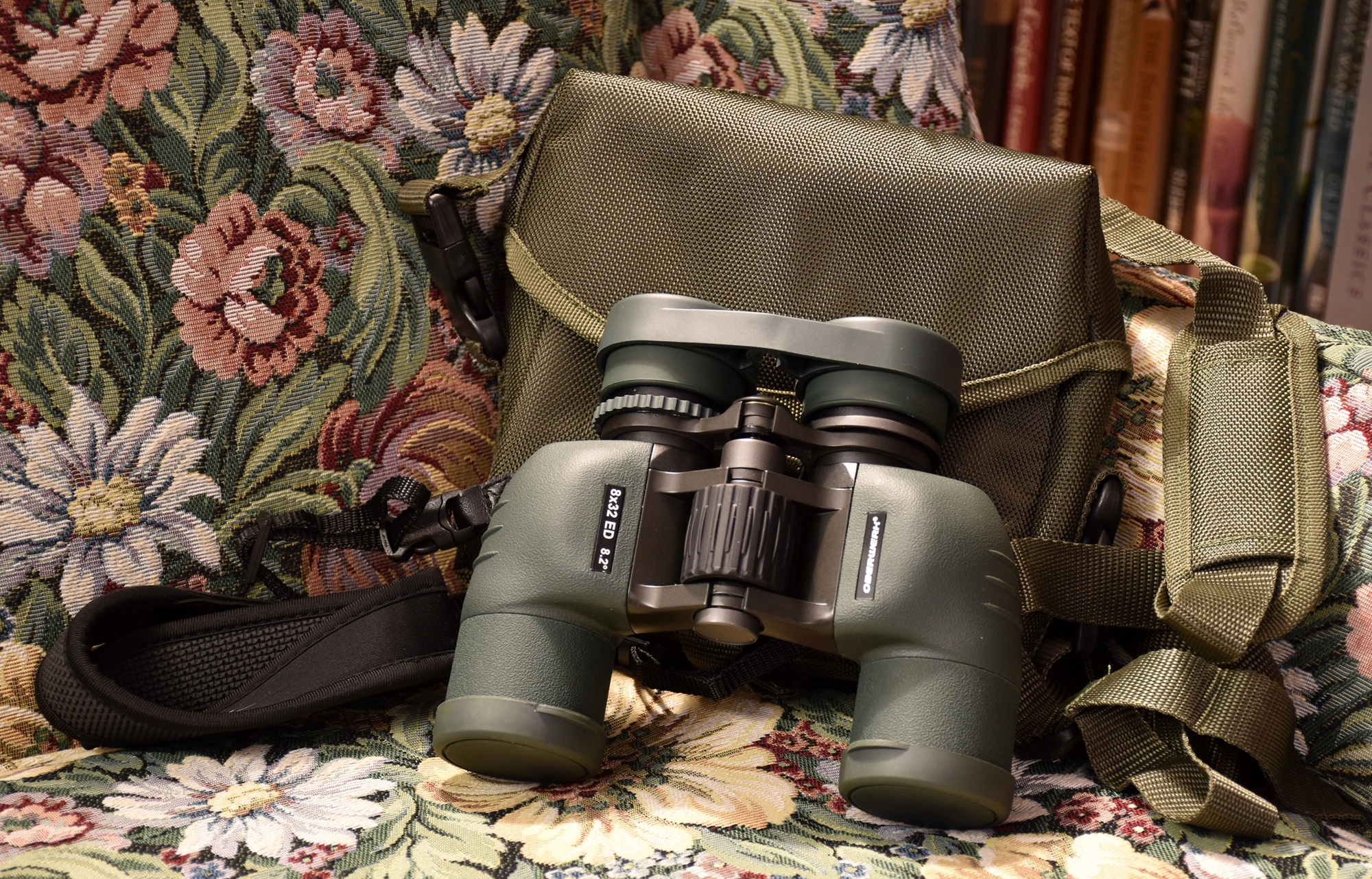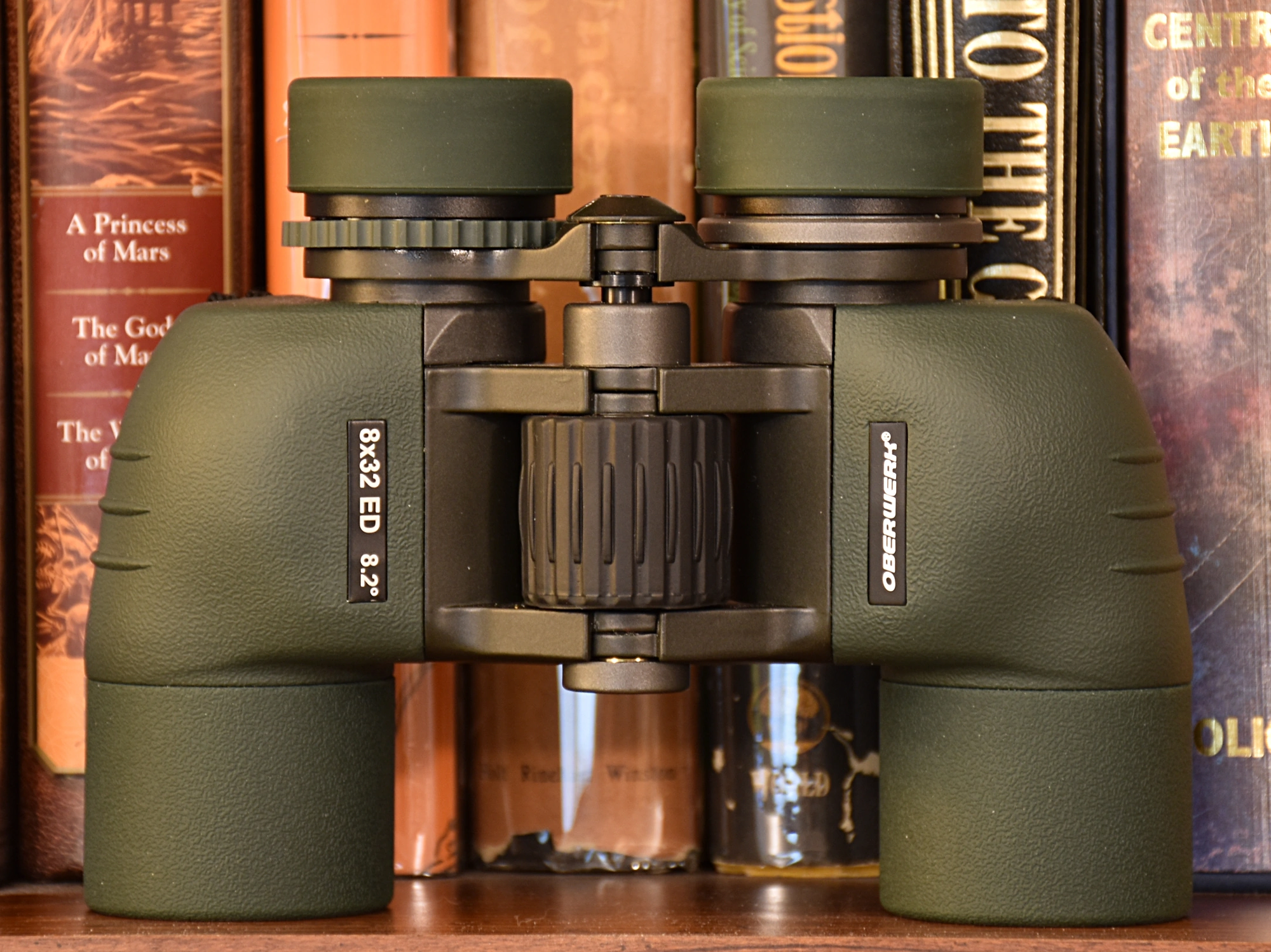Oberwerk has introduced a new SE (Special Edition) series of binoculars, the first of which is the 8×32 SE featured in the Three Supersized Clusters in Taurus sky tour.

The binocular has ED optics, for excellent color correction, and an 8.2 degree field of view. The on-axis sharpness, brightness, and contrast is superb. It is compact and robust with a comfortable hand feel and twist-up eyecups to precisely adjust eye relief. The arms connecting the eyepieces to the central focuser are stiff to hold accurate focus. A problem with mediocre binoculars is that the focuser arm assemblies are not strong enough to resist even slight pressure, which shifts the eyepieces and defocuses the image.
It comes with a durable carrying case.

The value of an instrument like this for binocular astronomy is that it delivers wide fields, easily reaches 8th magnitude stars in light-polluted suburban skies, and is comfortable and relaxed for hand held observing. It is ideal for exploring constellations and star fields — a perfect companion for quick observing sessions and also for the detailed study of constellations.

The 8×32 SE accepts standard 1/4-20 tripod adapters. Shown above is an adapter stud that can be left attached to the instrument so it can be quickly mounted on a tripod or parallelogram mount like the Universal Binocular Mount (UBM) p-gram on an Oberwerk 5000 tripod.

Why attach a small binocular like the 8×32 to a mount? First, the stability of a mounted binocular enables significantly fainter stars to be seen, even with a small instrument like this. On an evening when my hand held limit with the 8×32 was about 8.2 magnitudes, I could see stars fainter than 9th magnitude with it on a mount. Mounted binoculars remain where they are pointed while you consult star atlases or an app like Sky Safari, write observing notes, or have a sip of wine. Or two. And the comfort of observing with a p-gram mount like the UBM is frankly addictive. With your head resting on the back of a camp chair or a zero-gravity recliner, you can contemplate star fields for half an hour and more with no effort in total relaxation. (Observers have been known to fall asleep while doing this.)


I almost pulled the trigger on these the other day, but decided to show some restraint and ordered the 6.5x32mm LW instead. Although I’ve got binos ranging from 8x40mm – 25x100mm, this will be my smallest set and first Oberwerk’s.
I’ve been serious considering replacing all my astronomy binos with Oberwerk products based on their reputation alone, but thought I’d at least try their cheapest product first lol. Next goal will be to upgrade my first piece of dedicated astro-gear: the amazingly horrible 15x70mm SkyMasters!! They got me into this awe inspiring hobby so hold a special place in my heart despite their bottom-of-the-barrel performance and prisms that need conditional alignment on a weekly bases.
BTW, it’s awesome to see that you’ve got a blog Fiske!! Your posts, threads, and helpful advice have been indispensable to me on CloudyNights, and I’m hopeful that this will be a way to help even more new amateurs such as myself entering the hobby.
Clear skies,
– AstroApe –
Thank you so much, Astro. Getting the blog rolling is a project but I am so happy to finally be making this dream real.